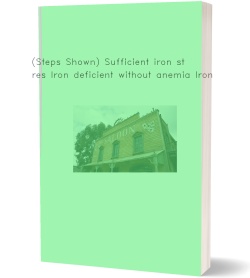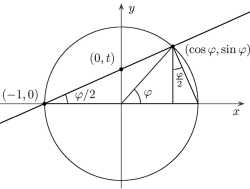SOUTHERN MISSISSIPPI PULP PAPER COMPANY (SMPP) BACKGROUND SMPP is a fully integrated paper company with
SOUTHERN MISSISSIPPI PULP & PAPER COMPANY (SMP&P)
BACKGROUND
SMP&P is a fully integrated paper company with extensive holdings in woodlands, several large mills, and nationwide distribution facilities. The company manufactures a wide variety of paper products under its own brand name, and a more limited product line under contract for private distributors. SMP&P’s oldest mill, Bayou 1, is located in Pass Christian, Mississippi and produces four major products; book paper, coarse paper, container board and food board. The flow of materials through the mill is illustrated below:
KRAFT BEATING
CHIPPING PULPING
MACHINING
hardwood
BLEACHING book paper
coarse paper
softwood
container
SEMI-CHEMICAL PULPING board
food board
PROCESS DESCRIPTION
The milling process begins with chipping in which two different grades of hardwood and one type grade of softwood are used as inputs. After chipping, the hardwood outputs enter Kraft pulping or semi-chemical pulping. The softwood and hardwood outputs from chipping enter the Kraft pulping operation. Some of the hardwood outputs from chipping transverse through semi chemical pulping process. No softwood chipping outputs can enter semi chemical pulping. From Kraft pulping, some products enter the bleaching stage while others go directly through beating. Semi-chemical pulping products go directly to the beating stage process. The outputs of the beating process are inputs into machining which produces the four major products, book paper, coarse paper, container board and food board.
Hardwood and softwood inputs for chipping are available from internal company sources in limited quantities. Additional quantities can be purchased at a slightly higher cost. The related availability’s and costs are as follows:
INTERNAL SOURCES INTERNAL EXTERNAL WOOD TYPE IN TONS PER YEAR COST COST
Hardwood - grade 1 110,000 tons per year $18 per ton $18.65 per ton
Hardwood - grade 2 88, 500 tons per year $18.10 per ton $18.20 per ton
Softwood 160,000 tons per year $19 per ton $ 20.95 per ton
When required, up to 15,000 tons per year of softwood Kraft pulp can be purchased. Quantity discounts are available on these purchased quantities so that the first 5000 tons/yr. would cost $57/ton while the second 10,000 tons/yr. cost $53/ton. This purchased pulp cannot be bleached and is used as an input into the beating process.
The following process yields (tons output/tons input) and capacities (tons input/year) were provided by the operations manager:
YIELDS
PROCESS HARDWOOD - 1 HARDWOOD - 2 SOFTWOOD CAPACITIES
Chipping .969 .942 .98 700,000
Kraft Pulping .88 .88 .88 130,000
Semi- Chemical Pulping .765 .755 ---- 125,000
Bleaching .90 .90 .825 170,000
Beating .99 .99 .99 300,000
Machining .98 .98 .98 285,000
MARKET DEMANDS & OTHER REQUIREMENTS
The four final products must be composed of at least 25% of grade 1 hardwood and at least 50% softwood. At least 10% of the composition must consist of outputs from the bleaching process. Due to contractual requirements a minimum of 33,400 tons of coarse paper, 117,800 tons of container board and 61,500 tons of food board must be produced in the upcoming year. SMP&P marketing has determined that all of the book paper that can be produced will be sold as well as any excess of the other three products above there minimum requirement.
OPERATIONAL COSTS
Company records show that variable operating cost ($/ton output) for each process are defined as follows:
PROCESS OPERATING COST
Chipping $ 2.40 per ton
Kraft Pulping $ 13.12 per ton
Semi- Chemical Pulping $ 18.98 per ton
Bleaching $ 6.03 per ton
Beating $ .77 per ton
Machining $ 7.16 per ton
Book paper sells for $210 per ton, $ 125 per ton for coarse paper, $133 per ton for container board and $128 per ton for food board.
QUESTIONS
- Develop and solve a linear programming model to determine output and input requirements which will maximize profits.
- Senior management is considering implementing modifications to the Bayou 1 plant to increase output capacity. Due to budget constraints only one operation or process can be modified. The cost of increasing capacity is approximately the same for each operation and would result an increase of capacity by 10%. Which operation (process) would you recommend to increase capacity. Use sensitivity analysis to support your answer.
Deliverable: Word Document




![[See Solution] Motivation U.S. sheep in the new year the first [See Solution] Motivation U.S. sheep in the](/images/solutions/MC-solution-library-80991.jpg)
![[Step-by-Step] Assignment 1: Descriptive Statistics Using either [Step-by-Step] Assignment 1: Descriptive Statistics Using either](/images/solutions/MC-solution-library-80992.jpg)
![[Steps Shown] Assignment #2 T-test Analysis of Variance Independent [Steps Shown] Assignment #2 T-test Analysis of](/images/solutions/MC-solution-library-80993.jpg)
